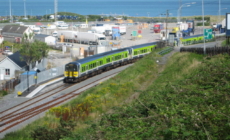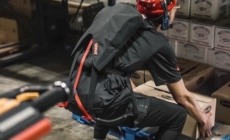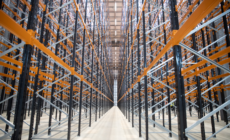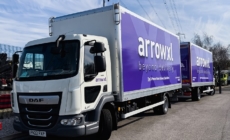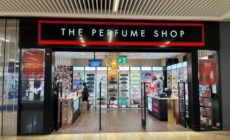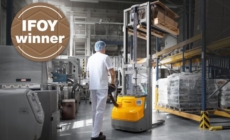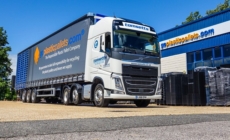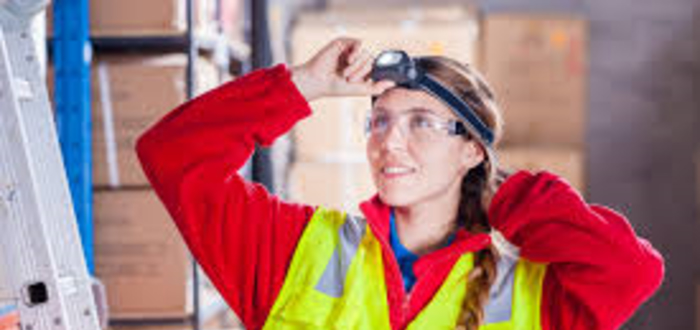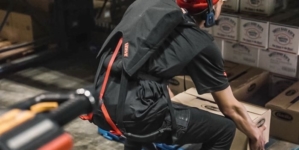-
ROSSLARE EUROPORT TARGETS HEALTH & SAFETY WITH CAMERA TELEMATICS PARTNERSHIP - 2 days ago
-
Landmark Study Reveals Wearable Robotics Significantly Boost Safety and Efficiency in Industrial Environments - July 24, 2024
-
Visku Tackle The Retail Seasonality Challenge One Pallet At A Time - July 22, 2024
-
KAMMAC AND BERGEN LOGISTICS STRENGTHEN FASHION & LIFESTYLE SERVICES IN THE UK - July 19, 2024
-
TENTBOX EXTENDS PARTNERSHIP WITH ARROWXL TO SUPPORT INCREASING DEMAND - July 17, 2024
-
The Perfume Shop improves customer journeys while driving profitability in partnership with Scurri - July 17, 2024
-
ZEROMISSION SECURES £2.3M ($3M) INVESTMENT TO ACCELERATE ELECTRIC FLEETS - July 16, 2024
-
BCMPA CELEBRATES SUCCESS OF 2024 CONFERENCE - July 15, 2024
-
Best of the Best: Jungheinrich Celebrates Triple International Award Win - July 12, 2024
-
GOPLASTICPALLETS.COM CALLS ON NEW CHANCELLOR RACHEL REEVES TO CONSIDER PLASTIC PACKAGING TAX REFORM - July 10, 2024
Why do Logistics professionals need Safety Glasses? Free pair of clear Samova safety glasses
Some of the most common problems encountered in the logistics professional’s workplace are:
Slips, trips and falls at the same level
Fall from height
Lifting and handling injuries
Struck by moving vehicles
Of the approximate 2000 people with eye injuries that happen every day. 1 in 10 of these people will miss one or more workdays due to this injury {1}.
With the right eye protection, the majority of these injuries could be prevented reducing time away from work and increasing the employee’s wellbeing at work.
We would always recommend using safety glasses as part of a well thought out risk analysis and from that providing a suitable personal protective equipment (PPE) policy devised for the workplace of the employee(s).
There are a variety of options out there to protect the eyes and face. These include safety glasses, goggles, hybrid glasses, over specs and face shields.
Prescription Safety Glasses.
Are custom made to order for the employee’s eyesight. Therefore these couldn’t be used by more than one employee. They come in single vision, bifocal, varifocal lenses and a variety of special coatings including tints, polarised and photochromic lenses.
Safety Goggles.
If there are strong chemicals, airborne particles or mechanical equipment at work then either sealed or vented goggles would be advisable to use. Make sure that they have the right ratings for this kind of protection on the manufacturer’s information.
Full Face Shield.
If there is the potential for flying particles or chemical splashes in the working environment the use of a face shield to protect the full facial area would be advisable.
Over Safety Glasses.
Good for visitors in the workplace and can be worn over existing eyewear.
Hybrid Safety Glasses.
Useful when there are changing hazards in the area. The user would then be able to move from a traditional glasses style to use the glasses like a goggle. By using a head strap this allows for greater eye protection and convenience.
Safety Glasses.
Wraparound styles and different tints such as yellow to help sharpness are available. Typically different lens coatings can be used to stop the eyewear from fogging or scratching easily. These usually can be worn by all and they do not contain any prescription.
Most safety glasses are made of polycarbonate. Due to its strength and ability to protect eyes from UV light.
Lastly are the fit and comfort of the glasses right for the level of use that they will be required for. There are three levels of optical class. Optical class 1 being the best meaning the eyewear can be worn all day long without any distortion in vision. It’s also useful to have some kind of lanyard or strap for the glasses so they can be removed but kept close to hand for when next needed.
We are offering readers of Warehousing Logistics International a free pair of clear Samova safety glasses to the first six replies quoting “WLI competition” to [email protected].
www.nothingbutsafetyglasses.com
Sources
1. Helathandsafetyhub.co.


